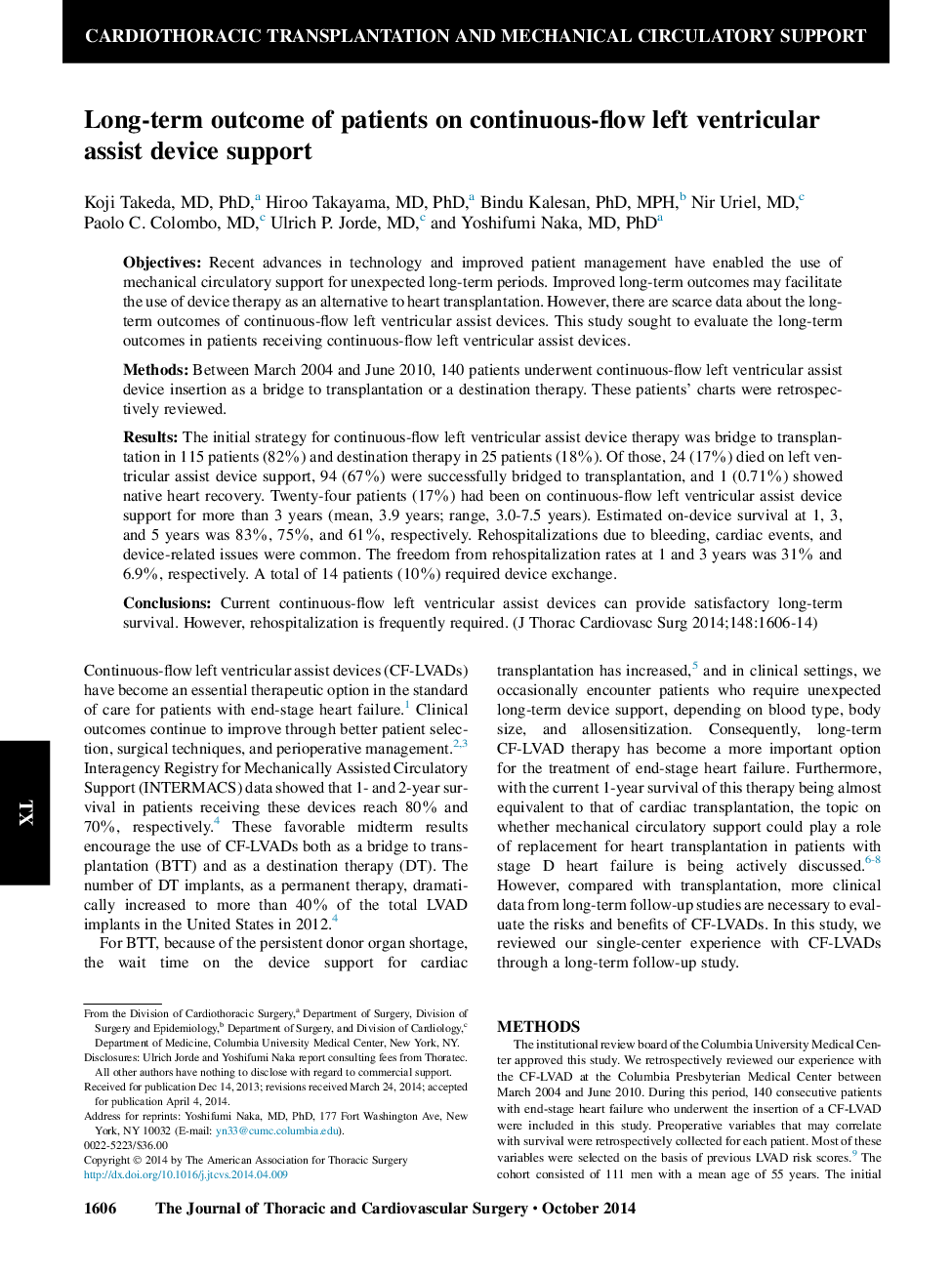| Article ID | Journal | Published Year | Pages | File Type |
|---|---|---|---|---|
| 2980426 | The Journal of Thoracic and Cardiovascular Surgery | 2014 | 9 Pages |
ObjectivesRecent advances in technology and improved patient management have enabled the use of mechanical circulatory support for unexpected long-term periods. Improved long-term outcomes may facilitate the use of device therapy as an alternative to heart transplantation. However, there are scarce data about the long-term outcomes of continuous-flow left ventricular assist devices. This study sought to evaluate the long-term outcomes in patients receiving continuous-flow left ventricular assist devices.MethodsBetween March 2004 and June 2010, 140 patients underwent continuous-flow left ventricular assist device insertion as a bridge to transplantation or a destination therapy. These patients' charts were retrospectively reviewed.ResultsThe initial strategy for continuous-flow left ventricular assist device therapy was bridge to transplantation in 115 patients (82%) and destination therapy in 25 patients (18%). Of those, 24 (17%) died on left ventricular assist device support, 94 (67%) were successfully bridged to transplantation, and 1 (0.71%) showed native heart recovery. Twenty-four patients (17%) had been on continuous-flow left ventricular assist device support for more than 3 years (mean, 3.9 years; range, 3.0-7.5 years). Estimated on-device survival at 1, 3, and 5 years was 83%, 75%, and 61%, respectively. Rehospitalizations due to bleeding, cardiac events, and device-related issues were common. The freedom from rehospitalization rates at 1 and 3 years was 31% and 6.9%, respectively. A total of 14 patients (10%) required device exchange.ConclusionsCurrent continuous-flow left ventricular assist devices can provide satisfactory long-term survival. However, rehospitalization is frequently required.
